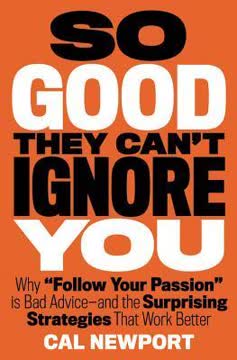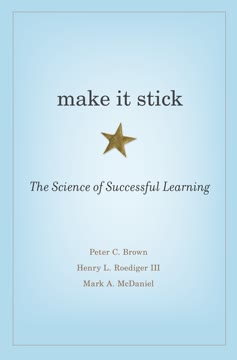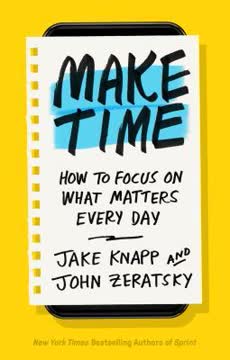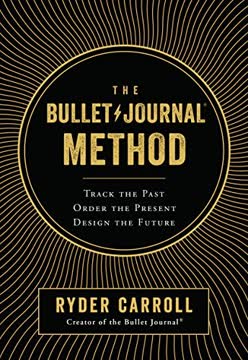つの重要なポイント
1. スリップボックス法:画期的なノート取りと知識管理のアプローチ
「スリップボックスは、何かに取り組むことを実際の作業に変えるための欠けていたステップを提供する。」
スリップボックスシステムは、多作なドイツの社会学者ニクラス・ルーマンによって開発されたノート取りと知識管理の方法です。このシステムの核心は、以下の3つの主要なコンポーネントで構成されています:
- 一時的なメモ:アイデアの迅速で一時的なリマインダー
- 文献メモ:読んだ内容の簡潔な要約
- 永続的なメモ:既存の知識と結びついたよく練られたアイデア
このシステムの力は、思考プロセスを外部化する能力にあります。相互に関連するメモのネットワークを作成することで、「外部の脳」を構築し、アイデアを発展させ、つながりを見つけ、時間をかけて洞察を生み出すことができます。このアプローチは、ノート取りを受動的な活動から能動的な思考ツールに変えます。
スリップボックス法の主な利点:
- 情報をオフロードすることで認知負荷を軽減
- アイデアとの継続的な関与を促進
- 予期しないつながりと洞察を促進
- 複雑な思考を発展させるための構造化されたアプローチを提供
2. 書くことは考えること:外部の足場の力
「書くことは、考える、読む、学ぶ、理解する、そしてアイデアを生み出すための最良の促進剤であることに異論はない。」
書くことを通じて考えることは、スリップボックス法の基本原則です。書くことを通じて思考を外部化することで、自分自身とアイデアとの対話に従事します。このプロセスは、思考を明確にし、理解のギャップを特定し、頭の中にあるアイデアが明らかでない場合に結びつきを見つけることを強制します。
スリップボックスのための永続的なメモを書く行為は、単に情報を記録することではなく:
- アイデアを自分の言葉に翻訳する
- 新しい情報を既存の知識に結びつける
- 質問やさらなる探求の領域を特定する
- 論点や思考のラインを発展させる
書くことを思考プロセスの一部として扱うことで、複雑なアイデアを理解し、独自の洞察を生み出す能力を劇的に向上させることができます。
3. コレクターからクリエーターへ:情報を知識に変える
「スリップボックスはメモのコレクションではない。それを使うことは、特定のメモを取り出すことではなく、関連する事実に導かれ、アイデアを混ぜ合わせることで洞察を生み出すことにある。」
情報との積極的な関与は、それを知識に変えるために重要です。スリップボックス法は、受動的な収集から能動的な創造へのアプローチをシフトさせます。単に情報を蓄積するのではなく、それを処理し、既存の知識に結びつけ、新しいアイデアを生み出すために使用します。
この変革は、いくつかの重要なステップを通じて行われます:
- 選択的な読書とノート取り
- アイデアを自分の言葉で再構成する
- 新しいメモを既存のメモに結びつける
- 定期的にメモのネットワークを見直し、洗練する
このように情報に関与することで、単なる蓄積を超えて真の理解と創造に進むことができます。スリップボックスは、単なる保管システムではなく、時間をかけてアイデアを発展させ、洗練するための思考のパートナーとなります。
4. リンクの技術:アイデアのネットワークを構築する
「メモ間にリンクを追加することで、ルーマンは同じメモを異なる文脈に追加することができた。」
アイデア間のつながりを作ることは、スリップボックス法の中心です。メモを互いにリンクすることで、アイデアの相互接続性を反映した知識のウェブを作成します。このネットワークにより、以下のことが可能になります:
- 概念間の予期しない関係を発見する
- 複数の視点からアイデアを見る
- 複雑なトピックのより微妙な理解を発展させる
- 既存のアイデアの組み合わせを通じて新しい洞察を生み出す
メモをリンクするプロセスは、情報を整理するだけでなく、アイデアがどのように関連しているかを積極的に考えることです。新しいメモを追加し、新しいリンクを作成することで、知識のネットワークは時間とともにより複雑で価値のあるものになります。
スリップボックスの主要なリンクの種類:
- 関連するメモへの直接参照
- 重要なトピックへの簡単なアクセスのための索引エントリ
- アイデアのクラスターを要約する概要メモ
- 論点や思考のラインを概説する構造メモ
5. 柔軟性と創造性:ボトムアップ思考の利点
「トップダウンではなくボトムアップで議論やアイデアを発展させることは、洞察を得るための最初で最も重要なステップである。」
ボトムアップ思考は、スリップボックス法の重要な特徴です。あらかじめ決められた構造や仮説から始めるのではなく、メモのコレクションから自然にアイデアや議論を生み出します。このアプローチにはいくつかの利点があります:
- 新しいアイデアや予期しないつながりに対する開放性
- 偏見や先入観の軽減
- 議論を発展させる際の柔軟性の向上
- 独自の洞察を得る可能性の増加
個々のアイデアとそのつながりに焦点を当てることで、既存の枠組みに情報を当てはめようとするのではなく、より堅牢で創造的な思考を発展させることができます。スリップボックスは、情報を整理する手段ではなく、探求と発見のツールとなります。
ボトムアップ思考の実例:
- 予期しないメモのつながりを通じて新しい研究方向を発見する
- 異なる分野のアイデアを組み合わせて新しい議論を発展させる
- 知識のネットワークに欠けているものを見つけることで既存の知識のギャップを特定する
6. フィードバックループ:スリップボックスが学習と理解を向上させる方法
「スリップボックスは、情報の客観的な保存を最も得意としない脳のタスクを助けるための外部の足場を提供する。」
継続的なフィードバックは、スリップボックス法の重要な側面です。メモと対話することで、常に見直し、洗練、拡張のプロセスに従事します。これにより、時間をかけて学習と理解を向上させる強力なフィードバックループが作成されます。
スリップボックスのフィードバックループの主要な要素:
- 既存のメモの定期的な見直し
- 新しい情報に基づいてアイデアを更新し洗練する
- 知識のギャップやさらなる探求の領域を特定する
- アイデアを自分の言葉で説明しようとすることで理解をテストする
このフィードバックプロセスは、以下のことを助けます:
- 間隔を空けた復習を通じて学習を強化する
- 誤解を特定し修正する
- 複雑なトピックの理解を深める
- 新しい質問や探求のラインを生み出す
思考を外部化し、アイデアと定期的に関与するシステムを作成することで、継続的な学習と知的成長のための強力なツールを作り出します。
7. メモから原稿へ:シームレスな執筆への移行
「書くことで、読んだことを理解する可能性が高まり、読んだことを理解することで、異なる思考のラインからアイデアを結びつけることができる。」
スムーズな執筆は、スリップボックス法を効果的に使用することで可能になります。メモを通じてアイデアを一貫して発展させ、結びつけることで、執筆プロジェクトのための豊かな基盤を作り出します。論文や本を書くときには、ゼロから始めるのではなく、よく発展したアイデアのネットワークを活用します。
メモから原稿への移行プロセスには以下が含まれます:
- トピックに関連するメモのクラスターを特定する
- これらのメモを予備的な構造に配置する
- メモのアイデアを拡張してドラフトセクションを作成する
- これらのセクションを洗練し、一貫した全体に結びつける
このアプローチの利点:
- 白紙のページに直面することがなくなるため、ライターズブロックが軽減される
- より一貫性のある、よく発展した議論
- 多様なアイデアやソースの統合が容易
- 多くの思考がすでに行われているため、生産性が向上
執筆を思考の連続的なプロセスとして扱うことで、より高品質な作品をストレスと労力を少なくして生み出すことができます。
8. バイアスの克服:スリップボックスが批判的思考を強化する方法
「確認バイアスは、まず執筆プロセス全体を逆転させ、次にどの議論を支持するかに関係なく、関連する情報を無差別に収集するインセンティブを変えることで対処される。」
仮定に挑戦することは、スリップボックス法の重要な利点です。思考を外部化し、アイデアのネットワークを作成することで、バイアスに直面し、視点を広げる機会を作り出します。スリップボックスは、以下の方法で批判的思考のツールとして機能します:
- 複数の視点を考慮することを奨励する
- 矛盾や不整合をより明確にする
- 仮定を体系的に問い直すための構造を提供する
- 多様なソースやアイデアの統合を促進する
スリップボックスを使用して批判的思考を強化するための戦略:
- 矛盾する視点を積極的に探し、メモする
- メモ間のつながりを定期的に見直し、問い直す
- 知識や推論のギャップを特定するためにスリップボックスを使用する
- メモを通じて過去の自分と対話する
アイデアを発展させ、挑戦するための外部システムを作成することで、思考の質と厳密さを時間とともに向上させることができます。
9. スマートなノート取りの習慣:日常生活に方法を統合する
「スリップボックスを使うだけで、古いアイデアや事実を不規則に取り出し、他の情報と結びつけることができる – まさに専門家が推奨する学習方法だ。」
一貫した実践は、スリップボックス法の完全な利点を享受するために不可欠です。スマートなノート取りを日常のルーチンに統合することで、時間をかけて思考と生産性を変革することができます。開発すべき主要な習慣には以下が含まれます:
- 常にペンを持って読み、メモを取る準備をする
- 一時的なメモを定期的に永続的なメモに処理する
- 毎日既存のメモを見直し、結びつける時間を取る
- 新しいアイデアやプロジェクトの出発点としてスリップボックスを使用する
スマートなノート取りを習慣にする利点:
- 読んだことの保持と理解の向上
- 多様なアイデア間のつながりを作る能力の向上
- 執筆と研究の生産性の向上
- 知識と思考スキルの継続的な発展
スリップボックスと一貫して関与することで、学習と創造の好循環を作り出し、時間とともに知的能力を劇的に向上させることができます。
最終更新日:
FAQ
What's "How to Take Smart Notes" about?
- Focus on Note-Taking: "How to Take Smart Notes" by Sönke Ahrens is centered around a note-taking technique inspired by Niklas Luhmann's Zettelkasten method, which emphasizes creating a network of interconnected notes to enhance writing, learning, and thinking.
- Boosting Productivity: The book outlines how this method can significantly boost productivity by transforming the way we approach writing and research, making it more efficient and enjoyable.
- Tool-Agnostic Approach: Ahrens keeps the book tool-agnostic, focusing on the principles of the Zettelkasten method rather than specific software, making it adaptable to both digital and analog systems.
Why should I read "How to Take Smart Notes"?
- Enhance Writing Skills: The book provides a systematic approach to improve writing skills by integrating note-taking into the writing process, making it easier to develop and articulate ideas.
- Improve Learning and Thinking: It offers strategies to enhance learning and critical thinking by encouraging the reader to engage deeply with the material and make meaningful connections.
- Practical and Timeless: Ahrens presents a practical method that is not dependent on the latest technology, focusing instead on timeless principles that can be applied across various disciplines and professions.
What are the key takeaways of "How to Take Smart Notes"?
- Writing as Thinking: Writing is not just a way to present ideas but a tool for thinking and developing them. The process of writing helps clarify thoughts and generate new insights.
- Interconnected Notes: The Zettelkasten method emphasizes creating a network of notes that are interconnected, allowing for the emergence of new ideas and insights through the relationships between notes.
- Simplicity and Structure: The method advocates for simplicity in note-taking and a structured approach to organizing notes, which helps in managing complex information and ideas effectively.
How does the Zettelkasten method work according to Sönke Ahrens?
- Two Types of Notes: The method involves creating two types of notes: literature notes, which summarize and reflect on the content of what you read, and permanent notes, which are written in your own words and connected to other notes.
- Linking Notes: Each note is linked to others, creating a web of ideas that can be explored and expanded upon, facilitating the development of complex arguments and insights.
- Indexing System: An index is used to keep track of notes and their connections, allowing for easy retrieval and exploration of ideas.
What are the benefits of using the Zettelkasten method?
- Enhanced Creativity: By connecting notes, the method encourages the discovery of new ideas and perspectives, fostering creativity and innovation.
- Efficient Writing Process: The method streamlines the writing process by providing a rich pool of interconnected ideas to draw from, reducing the time and effort needed to develop a coherent argument.
- Long-Term Learning: It supports long-term learning by encouraging the continuous development and refinement of ideas, making it easier to retain and apply knowledge.
How can "How to Take Smart Notes" improve my academic writing?
- Structured Workflow: The book provides a structured workflow that integrates reading, note-taking, and writing, making the process more efficient and less overwhelming.
- Focus on Understanding: It emphasizes the importance of understanding and engaging with the material, which leads to more insightful and well-supported arguments in academic writing.
- Avoiding Writer's Block: By continuously developing ideas through notes, the method helps prevent writer's block, as you always have a starting point for your writing.
What are the best quotes from "How to Take Smart Notes" and what do they mean?
- "One cannot think without writing." This quote highlights the central theme of the book: writing is an essential tool for thinking and developing ideas.
- "Writing is not what follows research, learning or studying, it is the medium of all this work." This emphasizes the idea that writing should be integrated into the entire process of learning and research, not just the final step.
- "The quality of a paper and the ease with which it is written depends more than anything on what you have done in writing before you even made a decision on the topic." This underscores the importance of preparation and the role of note-taking in producing high-quality writing.
How does Sönke Ahrens suggest overcoming common writing challenges?
- Breaking Down Tasks: Ahrens suggests breaking down the writing process into smaller, manageable tasks, which helps maintain focus and reduce overwhelm.
- Regular Note-Taking: By taking regular notes and connecting them, you build a reservoir of ideas that can be drawn upon when writing, reducing the pressure of starting from scratch.
- Embracing Flexibility: The method encourages flexibility in the writing process, allowing you to adapt and refine your ideas as you go, rather than sticking rigidly to a preconceived plan.
What role does simplicity play in the Zettelkasten method?
- Focus on Essentials: The method emphasizes focusing on the essentials and avoiding unnecessary complexity, which helps maintain clarity and efficiency in the note-taking process.
- Standardized Format: By using a standardized format for notes, the method reduces the cognitive load associated with organizing and retrieving information.
- Facilitating Connections: Simplicity in note-taking facilitates the creation of connections between ideas, which is crucial for generating new insights and understanding complex topics.
How does "How to Take Smart Notes" address the issue of information overload?
- Selective Note-Taking: The method encourages selective note-taking, focusing on the most relevant and insightful information, which helps manage the volume of information.
- Interconnected System: By creating an interconnected system of notes, the method allows for efficient retrieval and exploration of ideas, reducing the feeling of being overwhelmed by information.
- Continuous Refinement: The process of continuously refining and connecting notes helps distill information into its most useful and meaningful form, making it easier to manage and apply.
How can the Zettelkasten method be applied to digital tools?
- Tool-Agnostic Approach: Ahrens emphasizes that the principles of the Zettelkasten method can be applied to both analog and digital tools, allowing for flexibility in implementation.
- Digital Note-Taking Apps: Many digital note-taking apps, such as Obsidian or Roam Research, support the creation of interconnected notes, making them suitable for implementing the Zettelkasten method.
- Focus on Principles: Regardless of the tool used, the focus should remain on the principles of creating, connecting, and indexing notes to build a network of ideas.
What is the significance of the quote "Writing itself makes you realise where there are holes in things"?
- Revealing Gaps: Writing helps reveal gaps in understanding and arguments, prompting further exploration and refinement of ideas.
- Clarifying Thoughts: The process of writing forces you to clarify your thoughts and articulate them clearly, which can lead to new insights and a deeper understanding of the topic.
- Iterative Process: Writing is an iterative process that involves revising and refining ideas, and this quote highlights the importance of embracing this process to improve the quality of your work.
レビュー
本書『スマートノートの取り方』は、ニクラス・ルーマンの「ツェッテルカステン」システムに基づいたノート取りの方法を紹介している。多くの読者は、この方法が学習や執筆のプロセスにおいて画期的であると感じ、生産性や知識の保持力を向上させる可能性を高く評価している。本書は、書くことを思考の一部と捉え、リンクされた非階層的なノートシステムを推奨している。一部の批評家は、内容が繰り返しであったり、実践的な例が不足していると感じたが、ほとんどの読者は効果的な読書、ノート取り、知識管理に関する洞察を高く評価している。本書の影響は学術界を超え、生涯学習者やさまざまな分野の作家にも訴求している。
Similar Books














